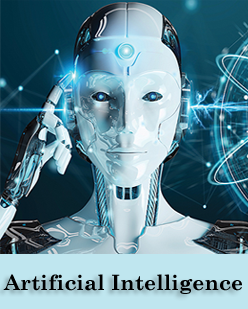Types of Agents in Artificial Intelligence
Types of Agents in Artificial Intelligence
Artificial Intelligence can be divided in various types, there are mainly two types of main categorization which are based on capabilities and based on functionally of AI.
Types of Agents in Artificial Intelligence
There are 4 types of agents in general, varying in the level of intelligence or the complexity of the tasks they are able to perform. All types can improve their performance and generate better actions over time. These can be generalized as learning agents.
- Simple Reflex Agents
- Model-based reflex agents
- Goal-based agents
- Utility-based agents
Simple Reflex Agents
These select an action based on the current state only, ignoring the history of perceptions. They can only work if the environment is fully observable, or the correct action is based on what is perceived currently.
Model-based reflex agents
Agents keep track of partially observable environments. These have an internal state depending on perception history. The environment/ world is modeled based on how it evolves independently from the agent, and how the agent actions affects the world.
Goal-based agents
This is an improvement over model-based agents and used in cases where knowing the current state of the environment is not enough. Agents combine the provided goal information with the environment model, to chose the actions which achieve that goal.
Utility-based agents
An improvement over goal-based agents, helpful when achieving the desired goal is not enough. We might need to consider a cost. For example, we may look for a quicker, safer, cheaper trip to reach a destination. This is denoted by a utility function. A utility agent will choose the action that maximizes the expected utility.
A generally Artificial Intelligent agent, also known as learning agent, was proposed by Alan Turing and is now the preferred method for creating state-of-the-art systems in Artificial Intelligence.

